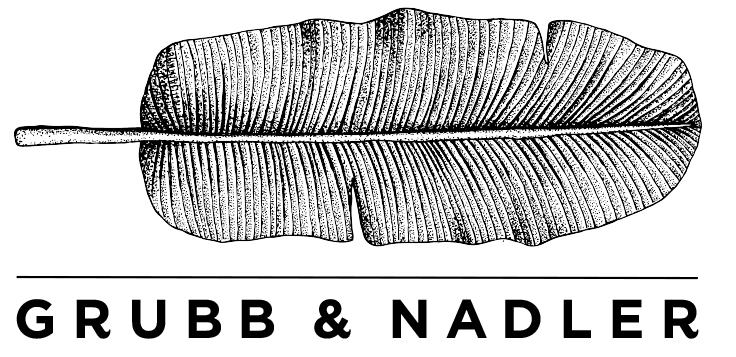Get to Know Our Dazzling Palm Collection
At Grubb & Nadler, we’re known for growing a huge variety of palm trees that are beautifully suited to life on the California coast and in other parts of the west. We always have large, gorgeous specimen palms, as well as smaller production crops, available for your orders and designs.
The king palm, Archontophoenix cunninghamiana (above and below), is an elegant, slender palm that grows well in wind-protected areas that experience minimal frost and where moisture and fertilizer can be provided. In cooler areas it performs well in sunny spots. It’s at its best where winter temperatures stay above 30F and summer highs consistently surpass 70F. King palms look particularly nice when planted in clusters or pairs!
Syagrus romanzoffiana, the queen palm, loves life in mild coastal California, especially in slightly warmer areas, and it makes an excellent street tree. This palm grows quite nicely in shade as well as sun. It’s fast-growing, with lush, plumose leaves. The queen palm is at its best where winter temperatures stay above 25F and summer highs consistently surpass 70F.
The pindo or jelly palm, Butia odorata (above, with a smaller crop in production pictured below) is an exceptionally versatile and adaptable plant, suited to coastal gardens as well as hot, inland places. With its leaves recurving down over the lip of a pot, it makes a perfect container specimen. In the ground it slowly becomes a modest-size palm tree (to 20 feet in 50 years) in sun or shade, developing drought-tolerance with age. Showy flower stalks pop out of dramatic baseball-bat-like bracts popular with floral designers. Fruits that follow ripen to yellow-orange and can be delicious and made into preserves (that’s why it’s called the jelly palm!).
Chamaerops humilis, the Mediterranean fan palm (above and below), is one of the most versatile palm species for California. Prune it as a shrub, a single palm tree, or as a cluster of paradise-island trunks. It’s one of the toughest plants for coastal and desert gardens alike, enduring long stretches of drought once established. Plant it in shade, sun, wind, containers, or salt spray. This palm is happy-go-lucky!
Large silvery leaves make Bismarckia nobilis (above and below) a true showstopper. A Madagascar native, this palm likes warmer temperatures and nice sunny spots with very well-drained soil.
You might think of palms as warm-weather plants, but many Trachycarpus are from the Himalayas, making them some of the most cold-hardy palms, thriving in areas as cold as -4F. So much for that tropical stereotype!
Trachycarpus fortunei, pictured above, has a furry trunk that insulates the palm from extreme cold. It's the most cold-hardy of the upright trunking palms. The furry trunks are great for mounting epiphytes, but Trachycarpus can also be “skinned” by removing the lingering furry leaf bases. This transforms the palm, giving it a slender, beautifully ringed trunk. In a hot, humid climate, the fuzzy trunk will shed naturally.
These palms grow well in the sun or shade, but present in shade with long bouncy leaves. In sun the leaves are stiffer, with shorter petioles. Try and keep these palms out of the wind for the best results.
If planted at an angle, Trachycarpus palms develop a pleasing upward bend as they grow towards the light.
We’re so excited to talk to you about all the many varieties of palm trees we grow. Check out our full availability list for a complete picture of all the palms available with sizes and quantities. And always feel free to contact our team at hello@grubbandnadler.com for expert advice about the plants we have on offer!
For more inspiration like this delivered to your inbox, sign up for our bi-weekly newsletter.












